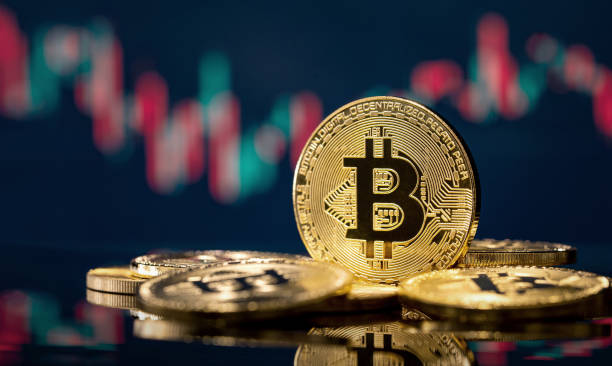In a significant development that has caught the attention of global financial markets, Bitcoin’s price has surged to Rp1.07 billion (approximately USD 66,000), coming within striking distance of its all-time high. This Bitcoin price surge is largely attributed to increasing optimism around crypto-backed ETFs, institutional investor activity, and macroeconomic trends favoring alternative asset classes. As digital assets once again make headlines, questions arise about the sustainability of this growth and what it means for investors.
Crypto ETFs Boost Investor Confidence
One of the main catalysts behind this current Bitcoin price surge is the rising popularity and acceptance of crypto-related Exchange-Traded Funds (ETFs). The recent approval and launch of spot Bitcoin ETFs in the U.S. has provided a regulated gateway for institutional investors to gain exposure to the world’s largest cryptocurrency without directly purchasing or storing it.
Firms such as BlackRock, Fidelity, and Ark Invest have led this charge, and their ETFs are attracting billions in inflows. According to Bloomberg, total assets under management in U.S.-based Bitcoin ETFs have surpassed $50 billion as of June 2025, reflecting growing mainstream acceptance.
This ETF-driven inflow has increased demand for Bitcoin, driving prices upward. It also signals a changing sentiment in traditional finance: cryptocurrency is no longer viewed solely as a speculative tool but as a legitimate component of diversified investment portfolios.
Market Sentiment and Economic Factors
Beyond ETFs, broader economic and geopolitical conditions are also playing a role in the Bitcoin price surge. With inflation still a concern in many major economies and interest rates remaining uncertain, investors are increasingly turning to Bitcoin as a hedge against currency debasement and central bank volatility.
Additionally, the weakening of the U.S. dollar in recent weeks has made Bitcoin more attractive for international investors. Many see Bitcoin as a digital equivalent of gold — a store of value that holds up against macroeconomic shocks.
Another key factor is the upcoming Bitcoin halving event expected in 2028, which reduces the number of new Bitcoins generated and historically leads to bullish price activity. While the halving is still years away, anticipation around its potential effects is already being priced in by long-term investors.
Asia’s Growing Influence in the Bitcoin Market
While the U.S. plays a central role in shaping the global crypto narrative, Asia—particularly Southeast Asia—is emerging as a powerful player in driving digital asset adoption. In Indonesia, for example, the value of Bitcoin has shot up to Rp1.07 billion, sparking renewed interest among retail and institutional investors.
The Commodity Futures Trading Regulatory Agency (Bappebti) recently authorized several new crypto platforms, expanding the market’s accessibility. Furthermore, with digital finance literacy improving and smartphone penetration reaching new highs, more Indonesians are participating in the digital economy, making the country a fertile ground for Bitcoin investment.
This regional momentum also supports the global Bitcoin price surge, demonstrating the decentralized and borderless nature of cryptocurrency markets.
Will Bitcoin Hit a New All-Time High?
As of June 2025, Bitcoin is hovering close to its all-time high of USD 69,000, reached in November 2021. With the current rally, many analysts believe that Bitcoin could soon surpass that milestone, especially if positive inflows continue through ETFs and other regulated investment channels.
However, the market remains volatile. Regulatory risks, potential security breaches in crypto exchanges, and sudden shifts in global monetary policy could quickly dampen sentiment. Still, the fundamentals behind this Bitcoin price surge appear stronger than previous bull runs, backed by institutional interest rather than retail hype alone.
A key difference this time is the infrastructure supporting Bitcoin trading. Custodianship has improved, more banks offer crypto services, and global regulatory frameworks are maturing. This creates a more stable environment for both seasoned investors and newcomers.
What This Means for Retail Investors
For retail investors, the current Bitcoin price surge presents both opportunity and caution. While the possibility of short-term gains is enticing, experts urge retail buyers to understand the risks of volatility and invest only what they can afford to lose.
The rise in regulated financial instruments such as ETFs makes it easier for the average person to get exposure without having to manage private wallets or navigate decentralized exchanges. However, education remains crucial. Understanding how Bitcoin works, its supply mechanics, and its historical price behavior can help individuals make better decisions.
More conservative investors might consider allocating a small percentage of their portfolios to Bitcoin as a long-term hedge. On the other hand, those with higher risk tolerance may seek opportunities in trading or staking other digital assets.
Conclusion: A Turning Point for Digital Assets?
The latest Bitcoin price surge could be more than just a temporary rally. With growing institutional acceptance, evolving regulation, and increasing global participation, Bitcoin is entering a new phase of maturity. While risks remain, especially in a highly speculative asset class, the foundations of this surge appear more solid than in past cycles.
If the momentum continues, we may witness not only a new all-time high but also a broader transformation in how digital assets are perceived and integrated into global finance. Whether you're a seasoned investor or just starting your crypto journey, now is the time to pay close attention.
Read More






 Friday, 21-11-25
Friday, 21-11-25







